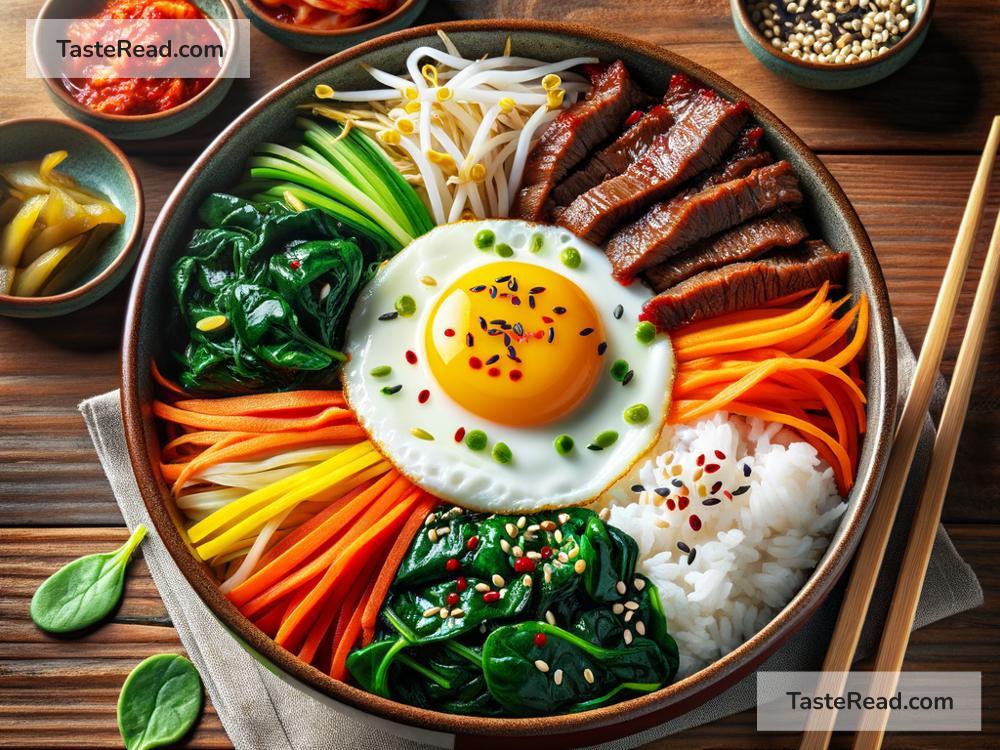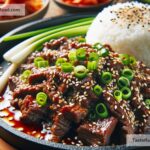How to Create Spicy Korean Bibimbap in Simple English
Korean cuisine has captured hearts worldwide with its bold flavors, colorful ingredients, and comforting dishes. Among its many popular offerings, bibimbap stands out as one of the easiest and tastiest meals you can make at home. The word “bibimbap” means “mixed rice,” and this dish combines rice, fresh vegetables, beef or tofu, spicy gochujang (Korean chili paste), and a fried egg for a perfect balance of flavors and textures.
In this blog, we’ll guide you step-by-step to create spicy Korean bibimbap using simple ingredients and easy techniques. Whether you’re new to cooking or experienced in the kitchen, this recipe is approachable and delicious—let’s get started!
What Is Bibimbap?
Bibimbap is a traditional Korean rice dish served with assorted toppings like vegetables, protein, and chili paste. It can be customized based on what you have in your fridge, which makes it a great recipe for anyone who loves creativity in cooking. Bibimbap is healthy, colorful, and packs a spicy kick from gochujang, a fermented chili paste that gives this meal its signature flavor.
Ingredients You’ll Need
Here are the basic ingredients for a simple spicy Korean bibimbap:
- Rice
-
Cooked white rice or brown rice (you can also use quinoa for a healthier option).
-
Vegetables (Choose Any)
- Carrots (julienned or thinly sliced)
- Cucumber or zucchini (thinly sliced)
- Spinach or kale (lightly steamed or sautéed)
- Mushrooms (such as shiitake, sliced and sautéed)
-
Bean sprouts (blanched for 1 minute)
-
Protein
-
Ground beef, chicken, or thinly sliced tofu (vegetarian-friendly option).
-
Egg
-
One fried egg (sunny side up is traditional, but you can cook it how you like).
-
Gochujang (Korean Chili Paste)
-
This is the key ingredient for spice! You can find gochujang at most Asian grocery stores or online.
-
Soy Sauce and Sesame Oil
-
For seasoning the protein and veggies.
-
Optional Garnishes
- Sesame seeds
- Green onion slices
- Seaweed flakes
Preparation Steps
Follow these simple steps to create your bibimbap:
Step 1: Cook the Rice
Start by cooking your rice—this is the base of bibimbap. Use a rice cooker or follow package instructions for stovetop cooking. Once done, keep it warm.
Step 2: Prep the Vegetables
Choose a variety of vegetables to make your bibimbap colorful and healthy. Wash and slice everything thinly so it cooks quickly. If you’re using spinach or bean sprouts, blanch them in boiling water for 30-60 seconds, then drain and rinse them under cold water. For mushrooms, zucchini, and carrots, sauté them lightly in a pan with a small drizzle of sesame oil. Cook each vegetable separately so they stay distinct in flavor.
Season your veggies with a pinch of salt and sesame oil as you cook.
Step 3: Cook the Protein
In a pan, cook ground beef, chicken, or tofu with a bit of soy sauce and sesame oil until it’s cooked through and flavorful. For a vegetarian version, simply sauté tofu slices until golden.
Step 4: Make Gochujang Sauce
To make the spicy sauce, mix 2 tablespoons of gochujang with 1 tablespoon of sesame oil, 1 teaspoon of sugar, and 1-2 teaspoons of water. Adjust the ratio to your taste—if you prefer spicier, add more gochujang; if you like it milder, reduce the amount.
Step 5: Fry the Egg
A fried egg is essential to bibimbap. Heat a bit of oil in a nonstick skillet and fry the egg until the whites are set but the yolk is still runny. A runny yolk will mix beautifully into the rest of the dish once you stir it together!
Step 6: Assemble the Bibimbap
Now comes the fun part—assembly! In a large bowl, add a base of cooked rice. Arrange your cooked vegetables, protein, and fried egg on top of the rice in sections. Each ingredient should be visible—it’s all about that colorful presentation.
Place a spoonful of your gochujang sauce in the middle of the bowl. Don’t worry about mixing yet—we’ll get to that when you eat!
Step 7: Top It Off
Sprinkle sesame seeds, sliced green onions, or crushed seaweed flakes on top for extra flavor and texture. If you like extra spice, add a dash of red chili flakes or hot sauce.
How to Eat Bibimbap
Bibimbap is meant to be mixed! Grab a spoon and mix everything together, breaking the egg yolk and blending the gochujang sauce through the rice and toppings. Each bite should have a bit of everything—a harmonious balance of spicy, savory, crunchy, and creamy textures.
Why You’ll Love Bibimbap
-
It’s Customizable
You can use whatever vegetables are in your fridge, and switch out proteins to suit your diet. -
It’s Healthy
Bibimbap is loaded with fresh veggies, lean protein, and nutritious rice. Using sesame oil instead of heavy sauces keeps the dish light and wholesome. -
It’s Fun to Make and Eat
Arranging the ingredients feels artistic, and mixing the bowl brings all the flavors together perfectly.
Final Thoughts
Spicy Korean bibimbap is a dish that’s both easy to make and impressively delicious. It’s a fantastic way to bring Korean flavors into your home without complicated techniques or obscure ingredients. With this simple recipe, you’ll have a vibrant and satisfying meal that’s perfect for lunch, dinner, or even meal prep.
So, grab your gochujang and get cooking—bibimbap awaits!


